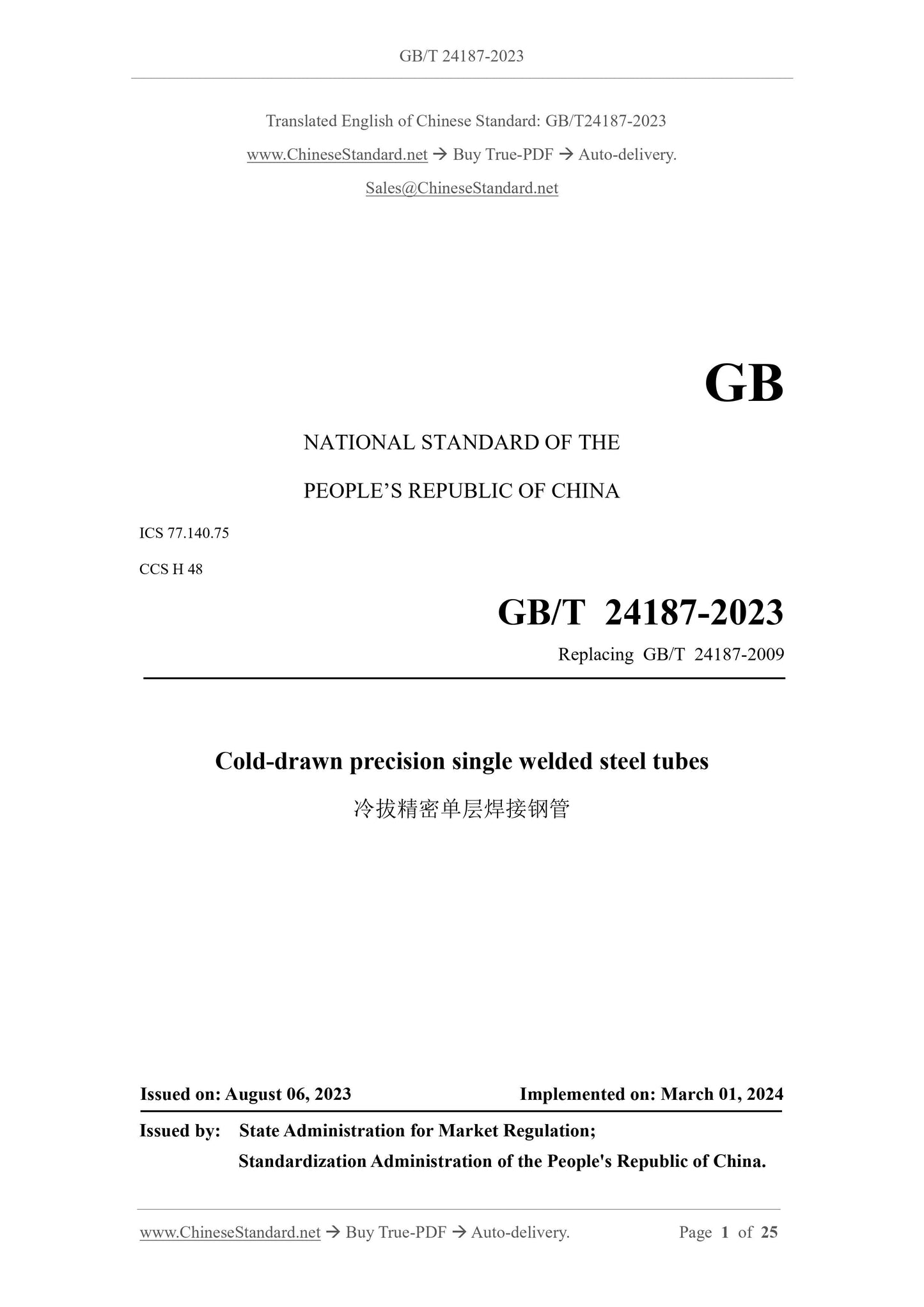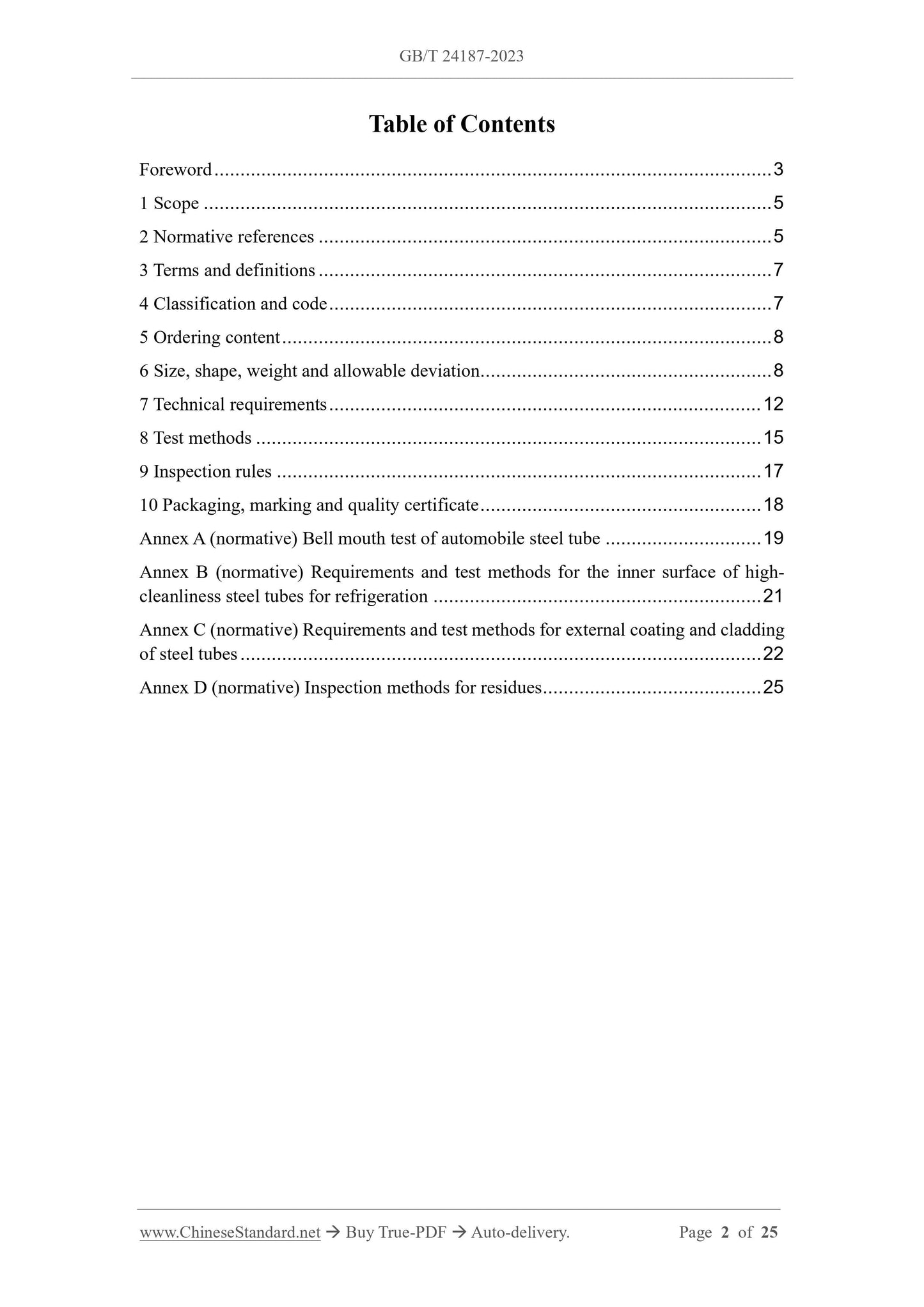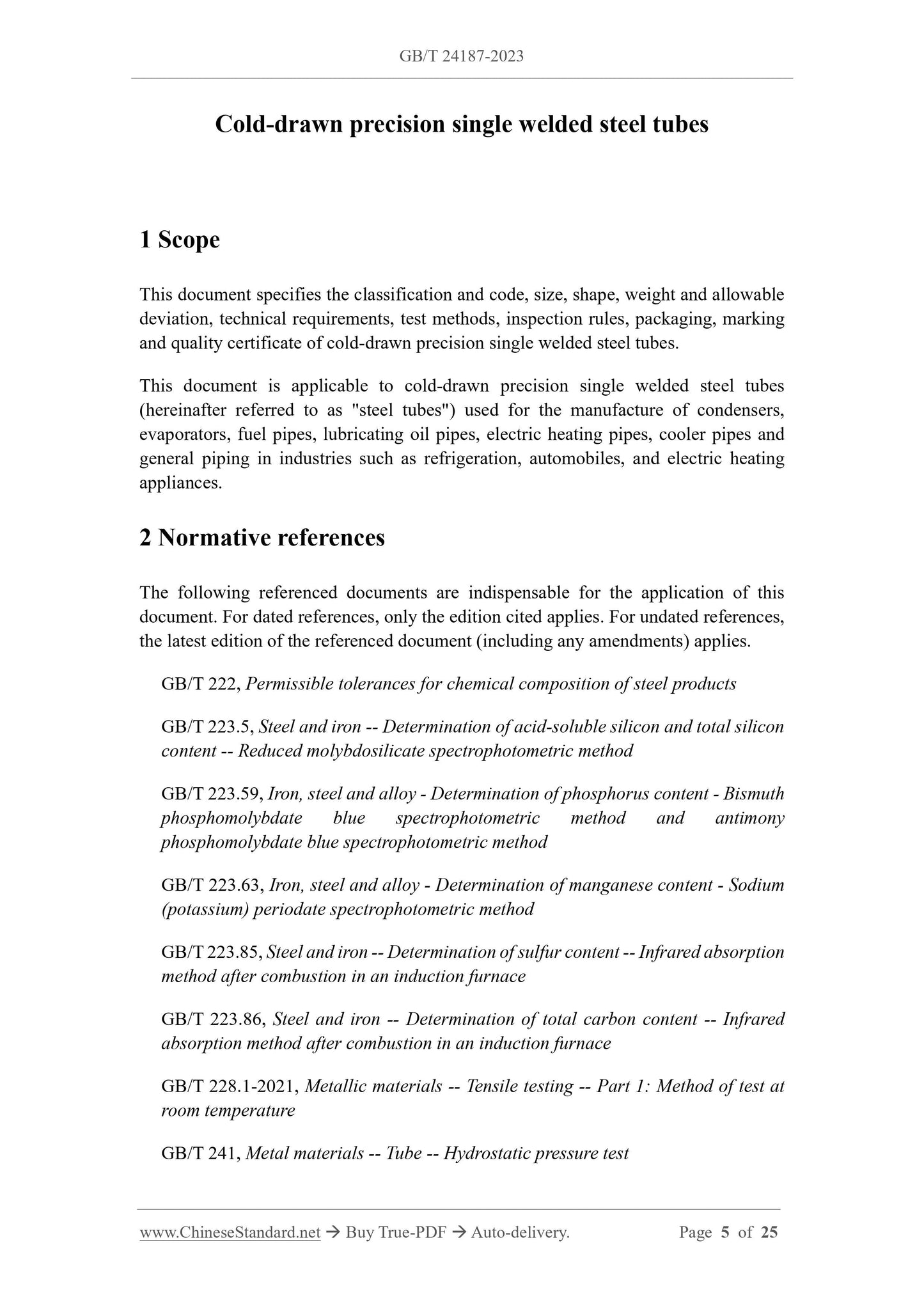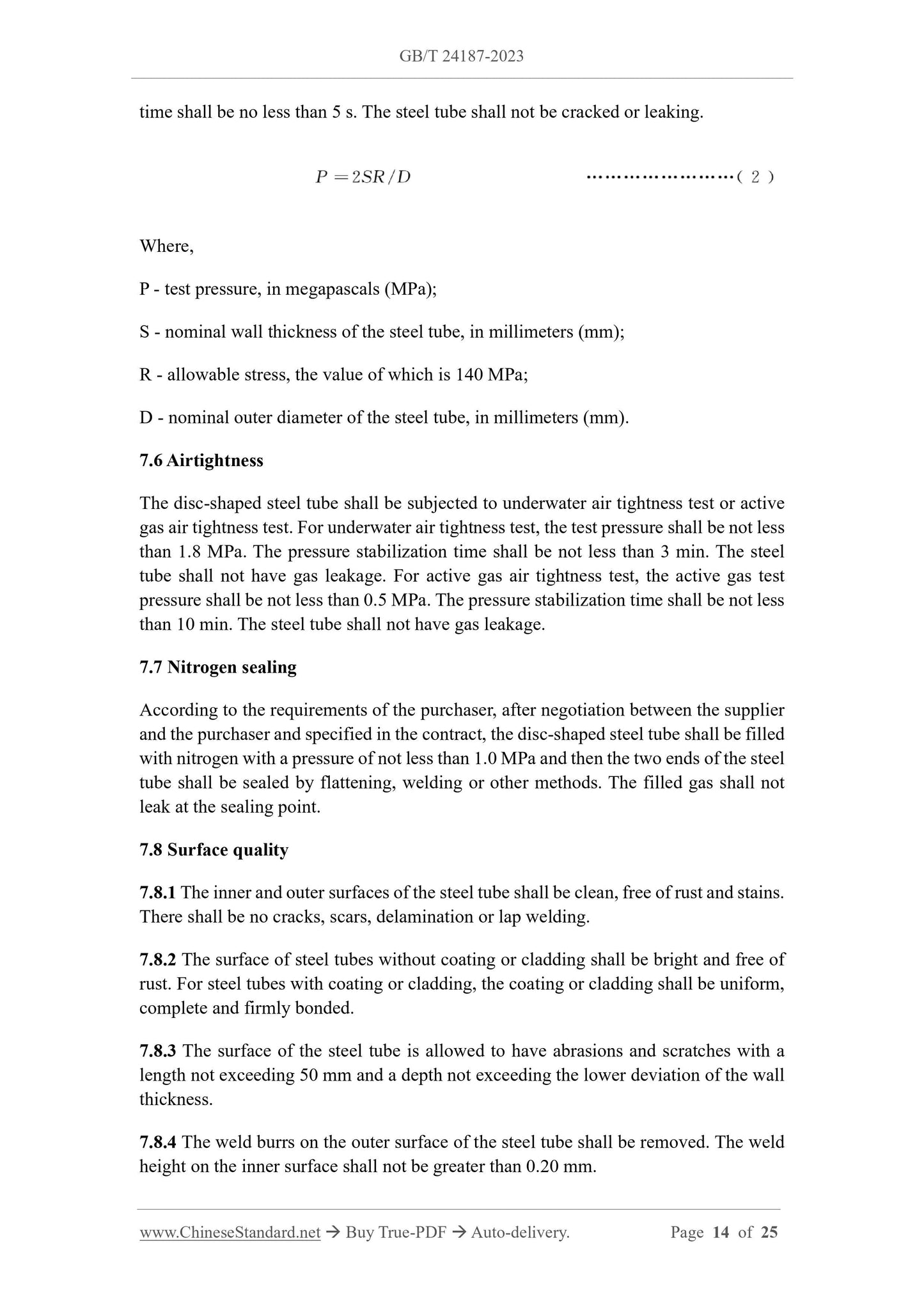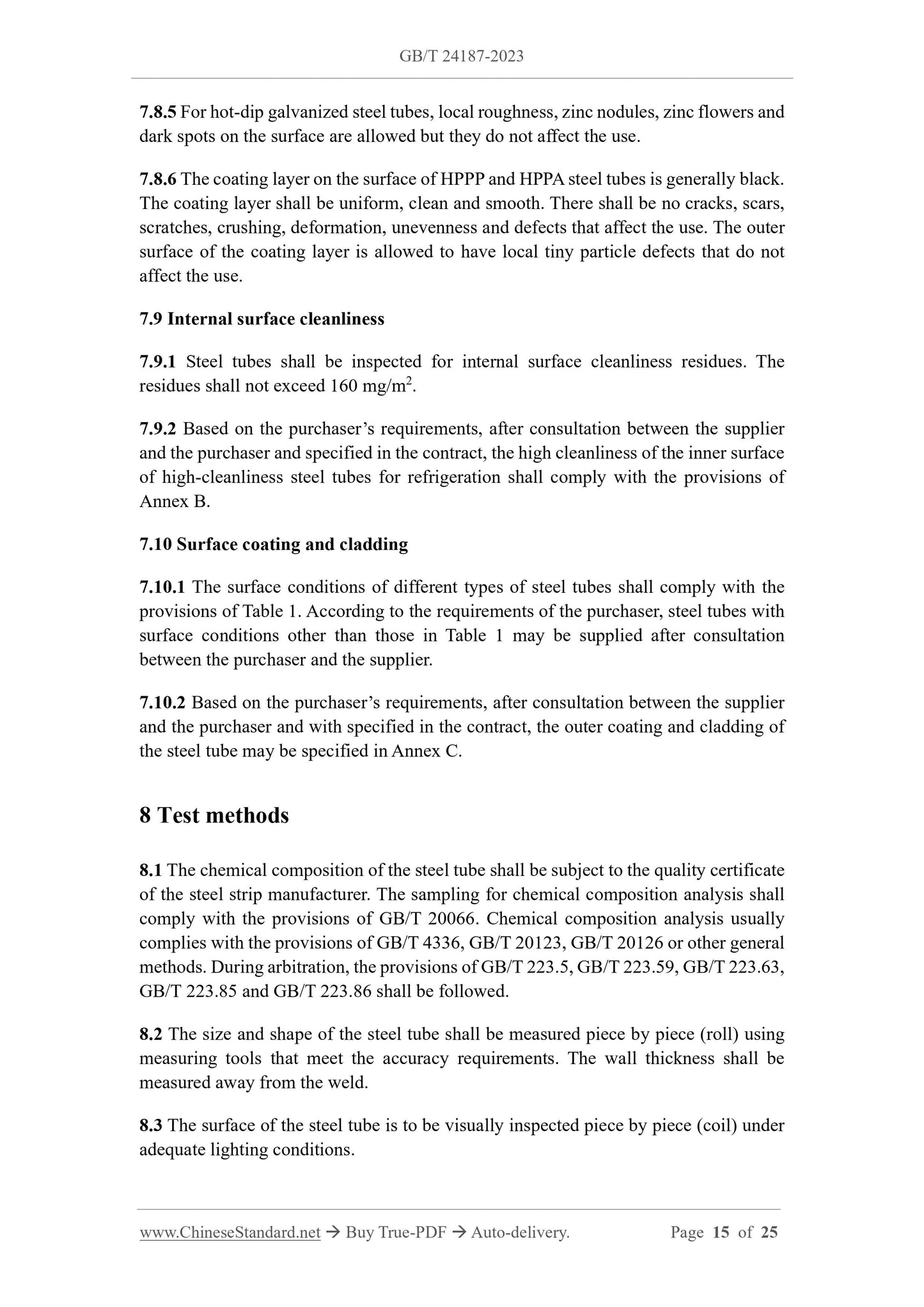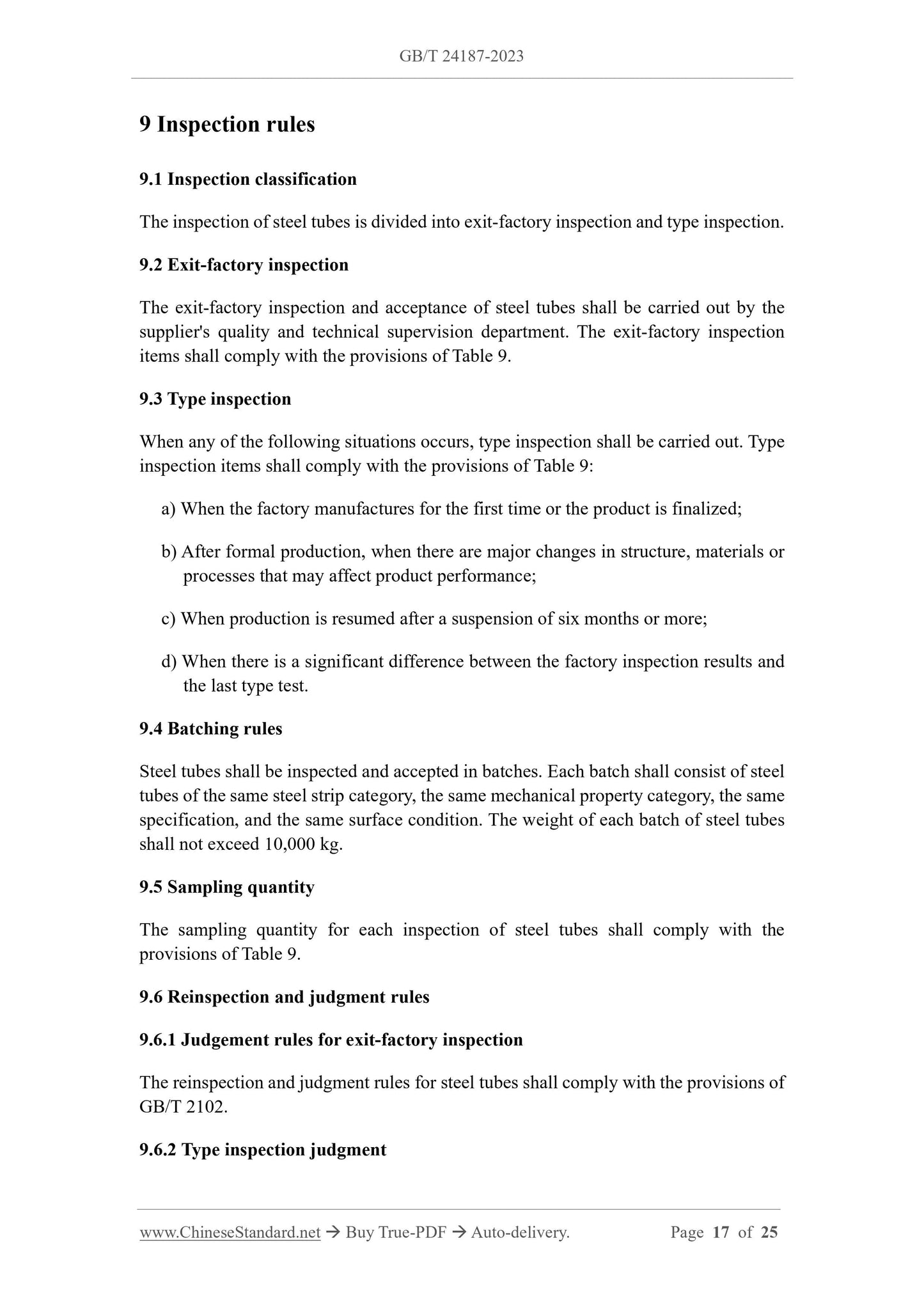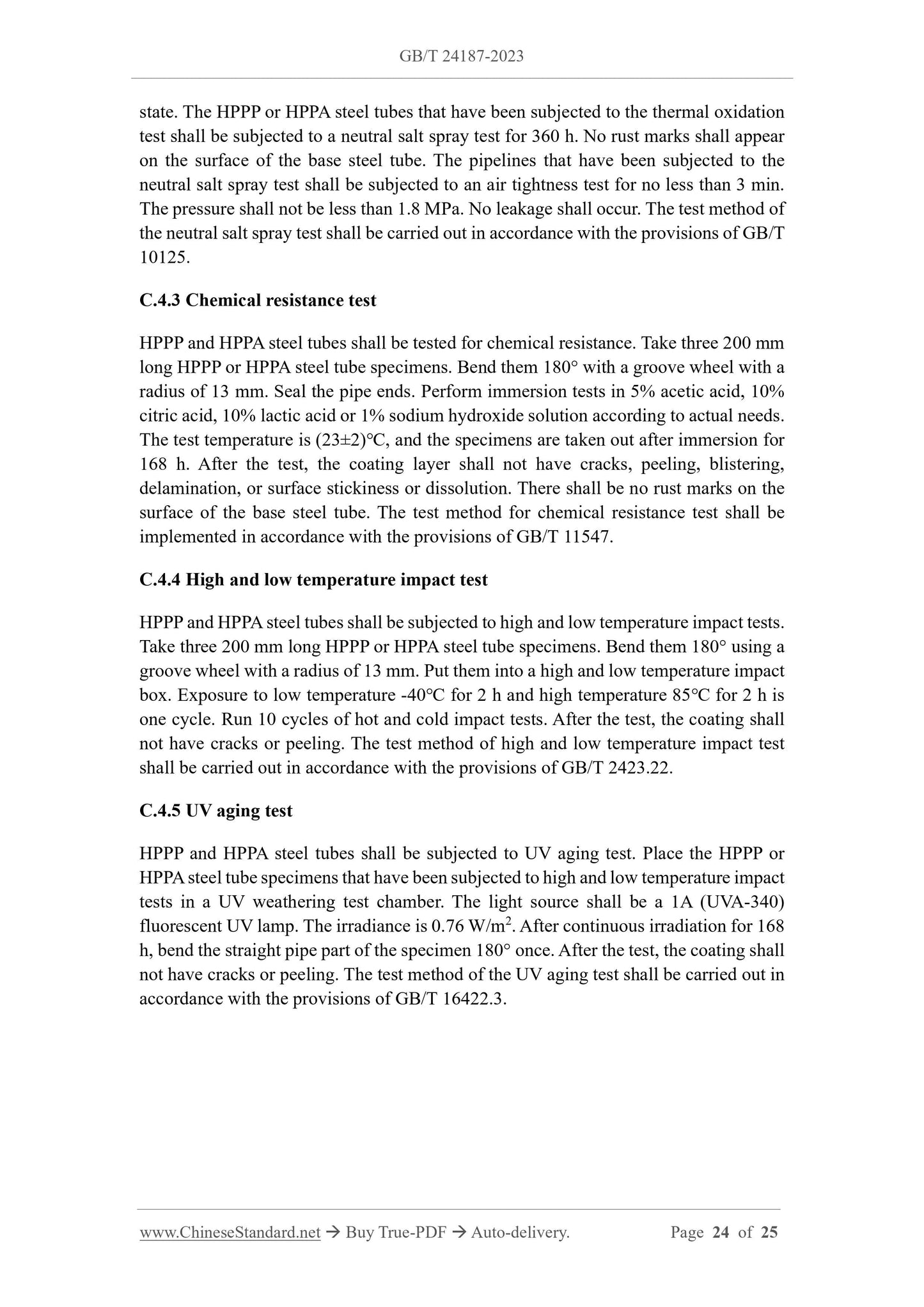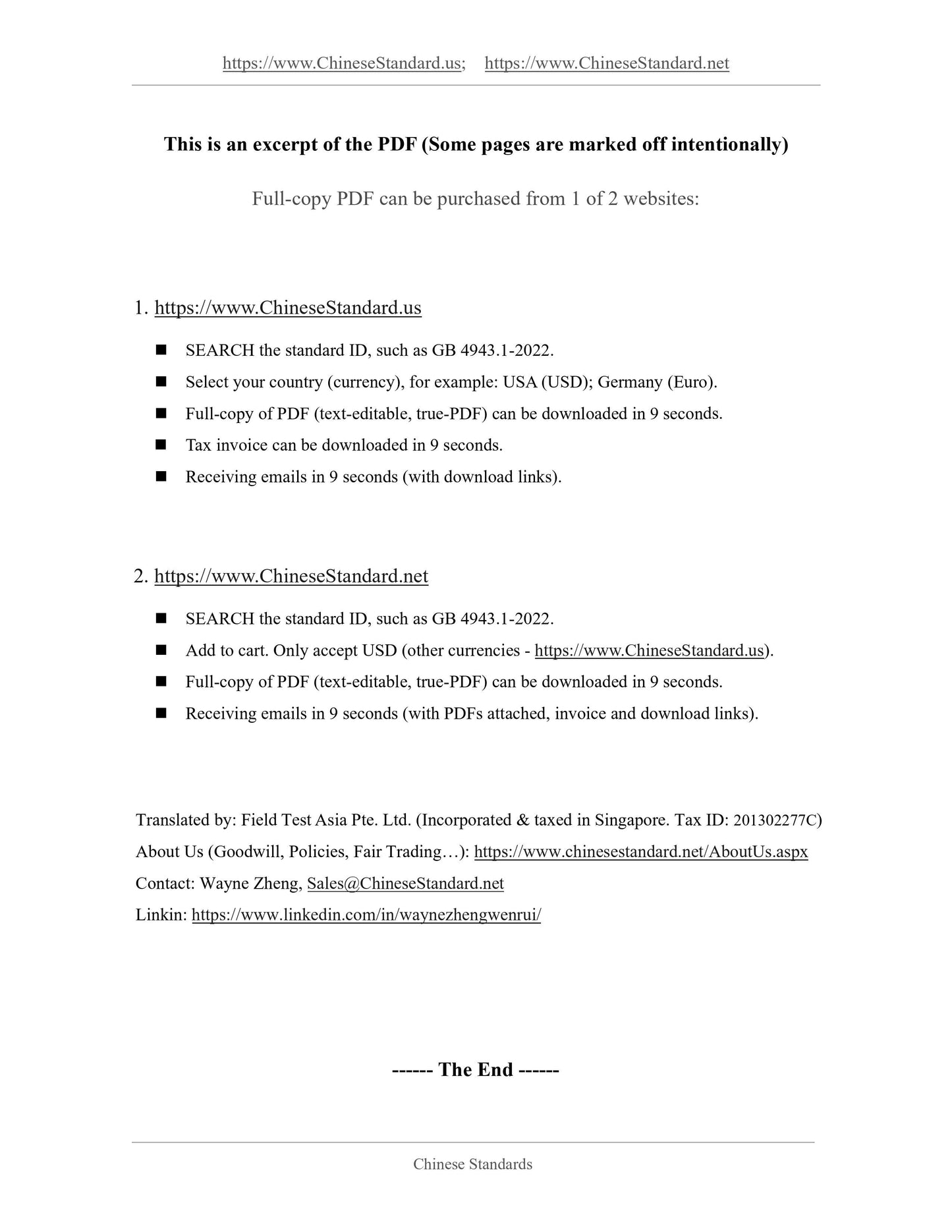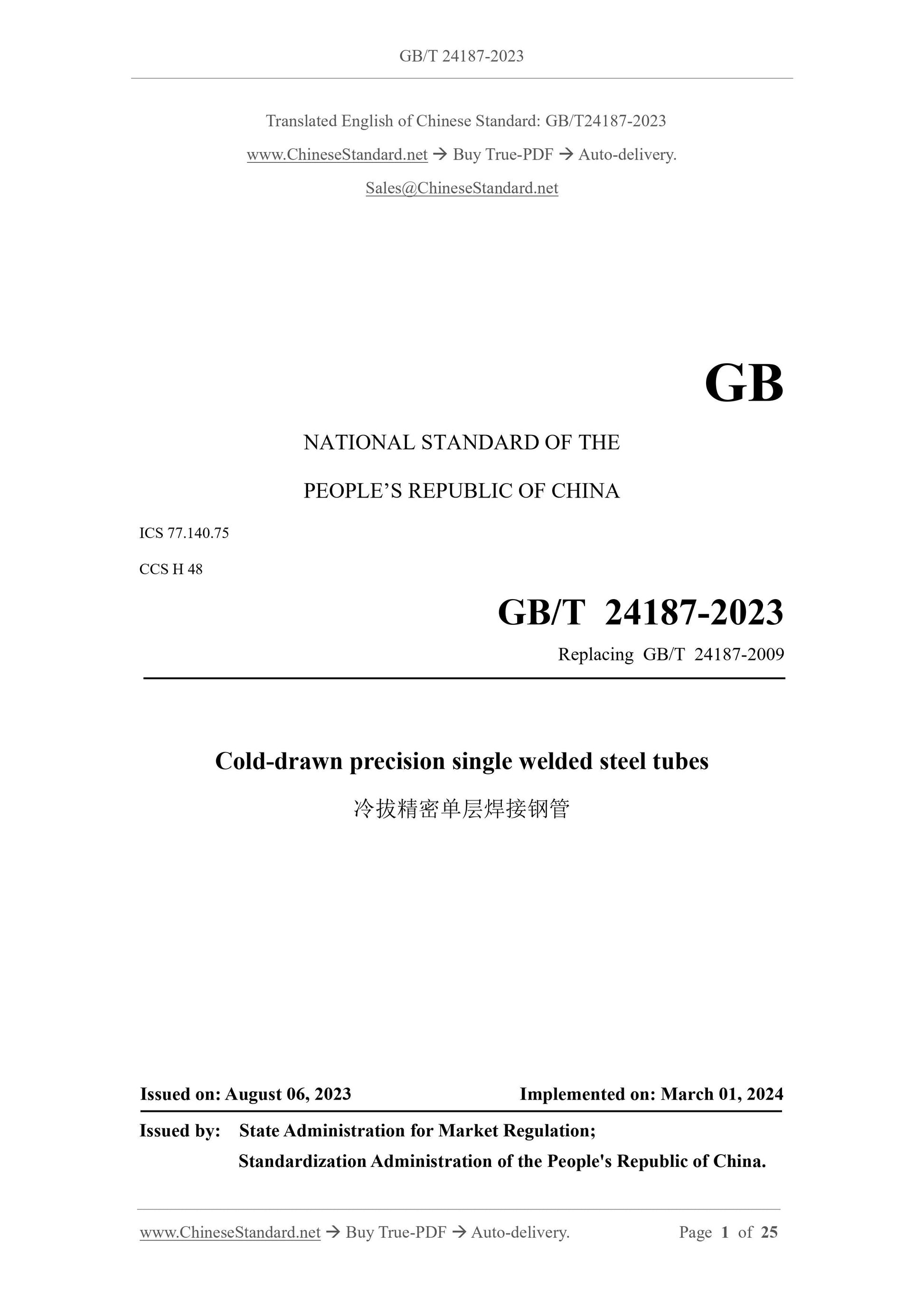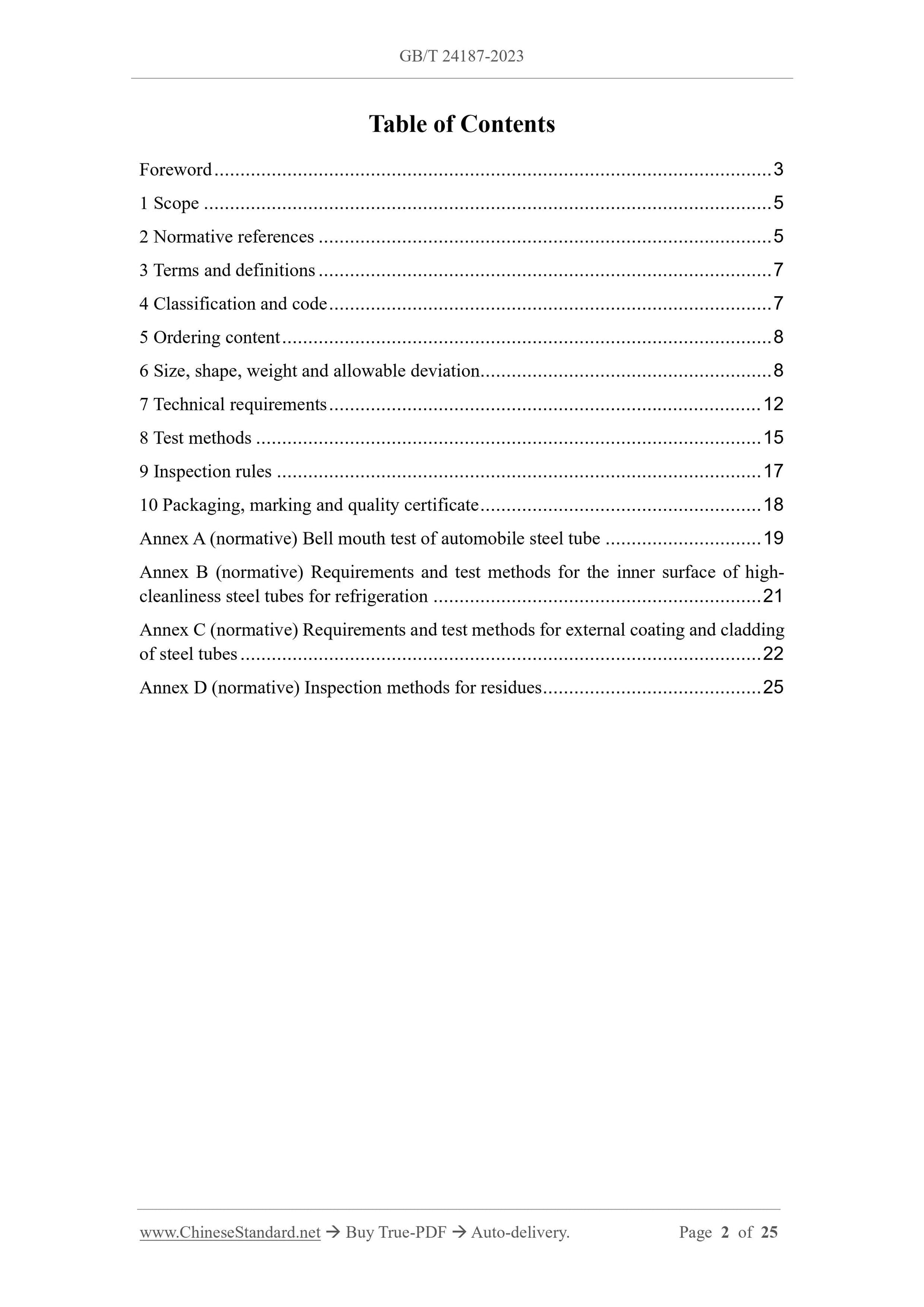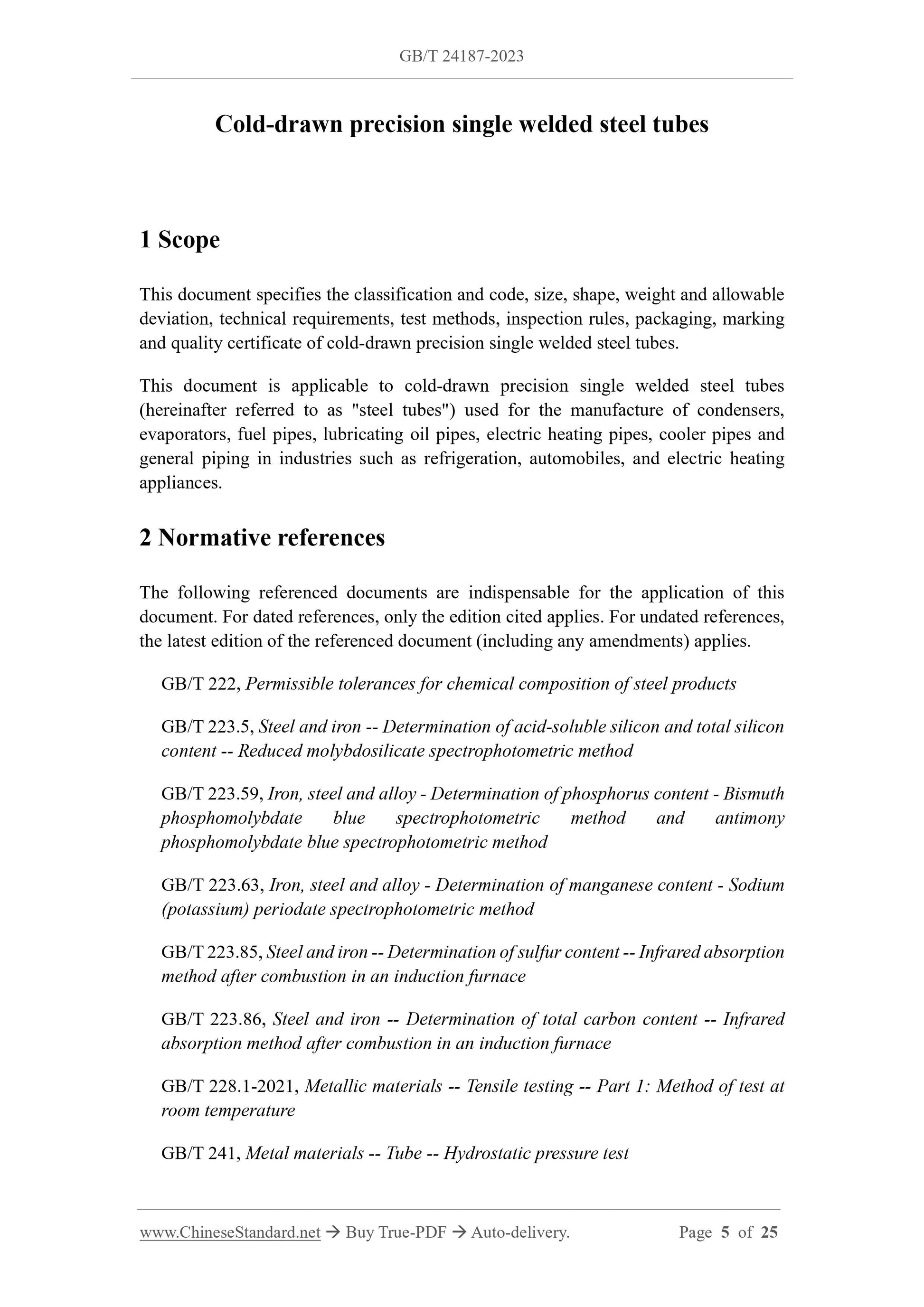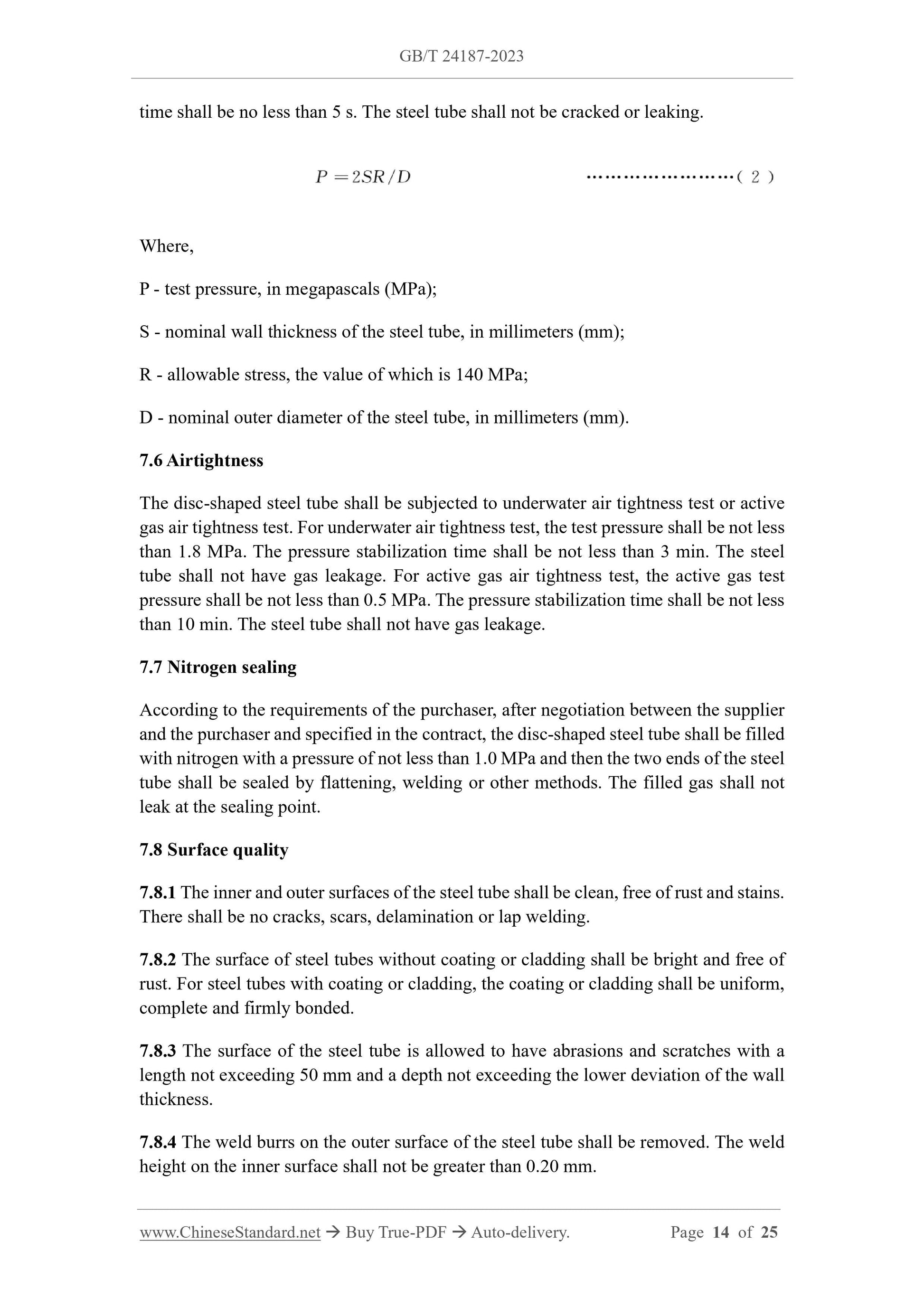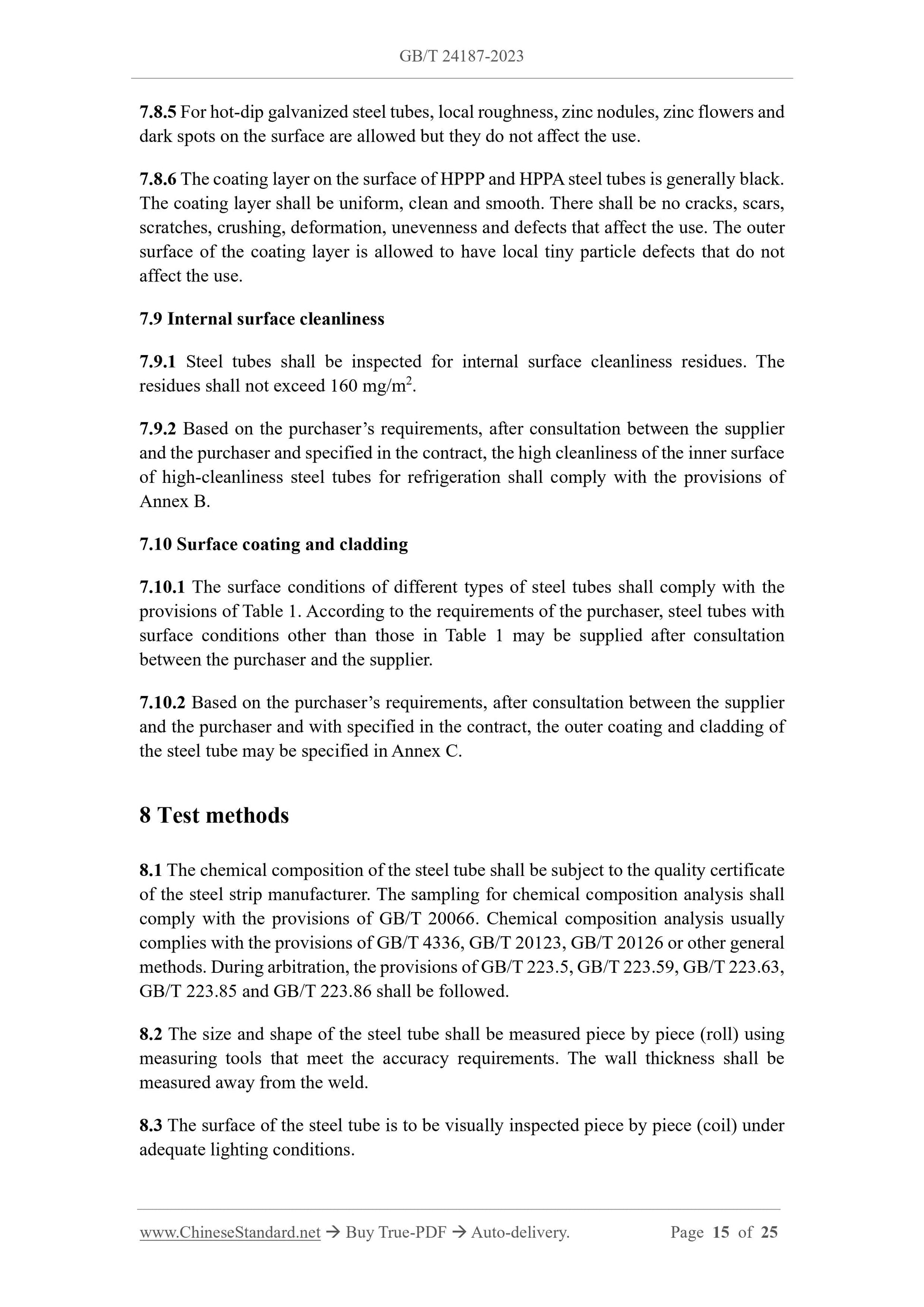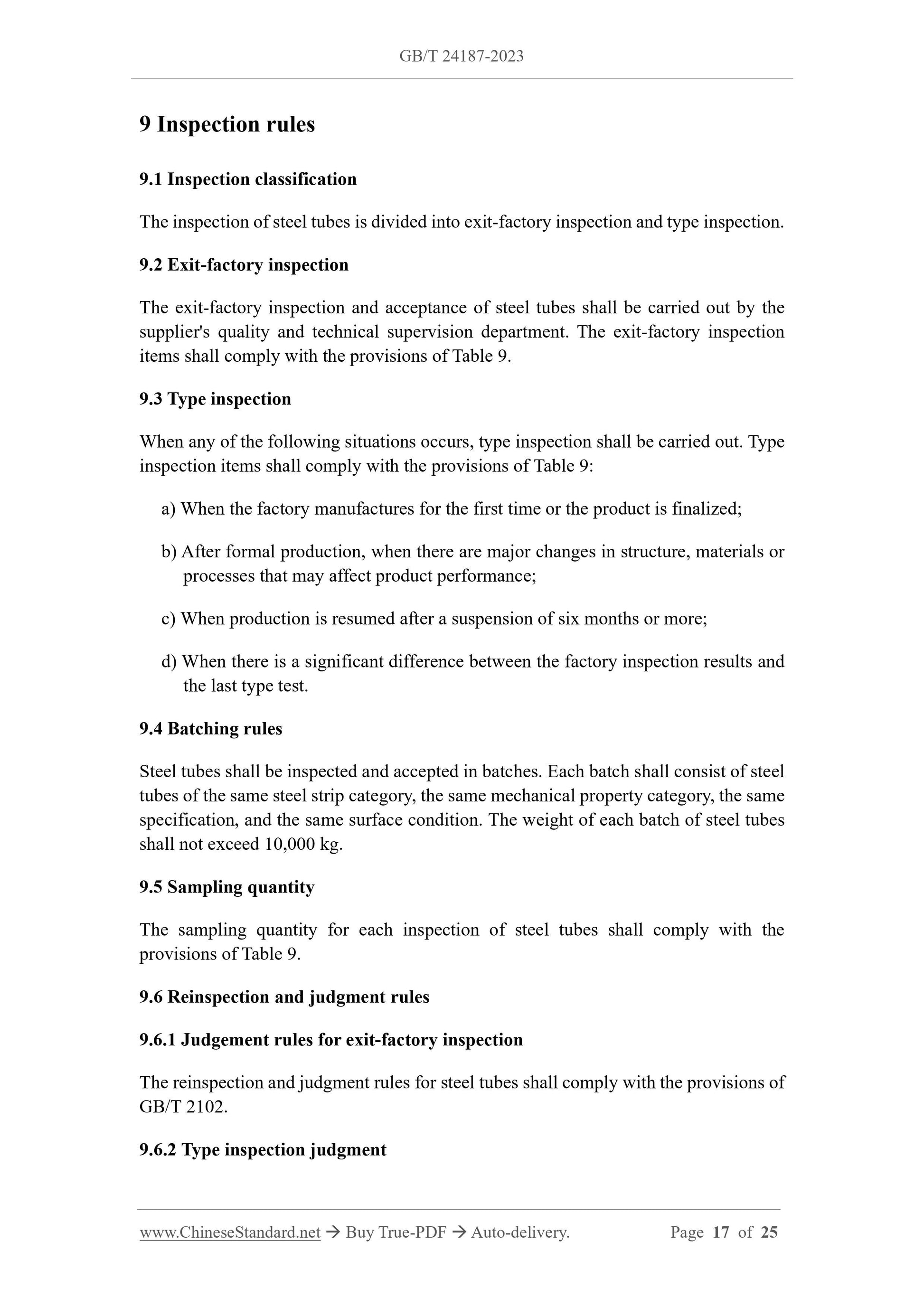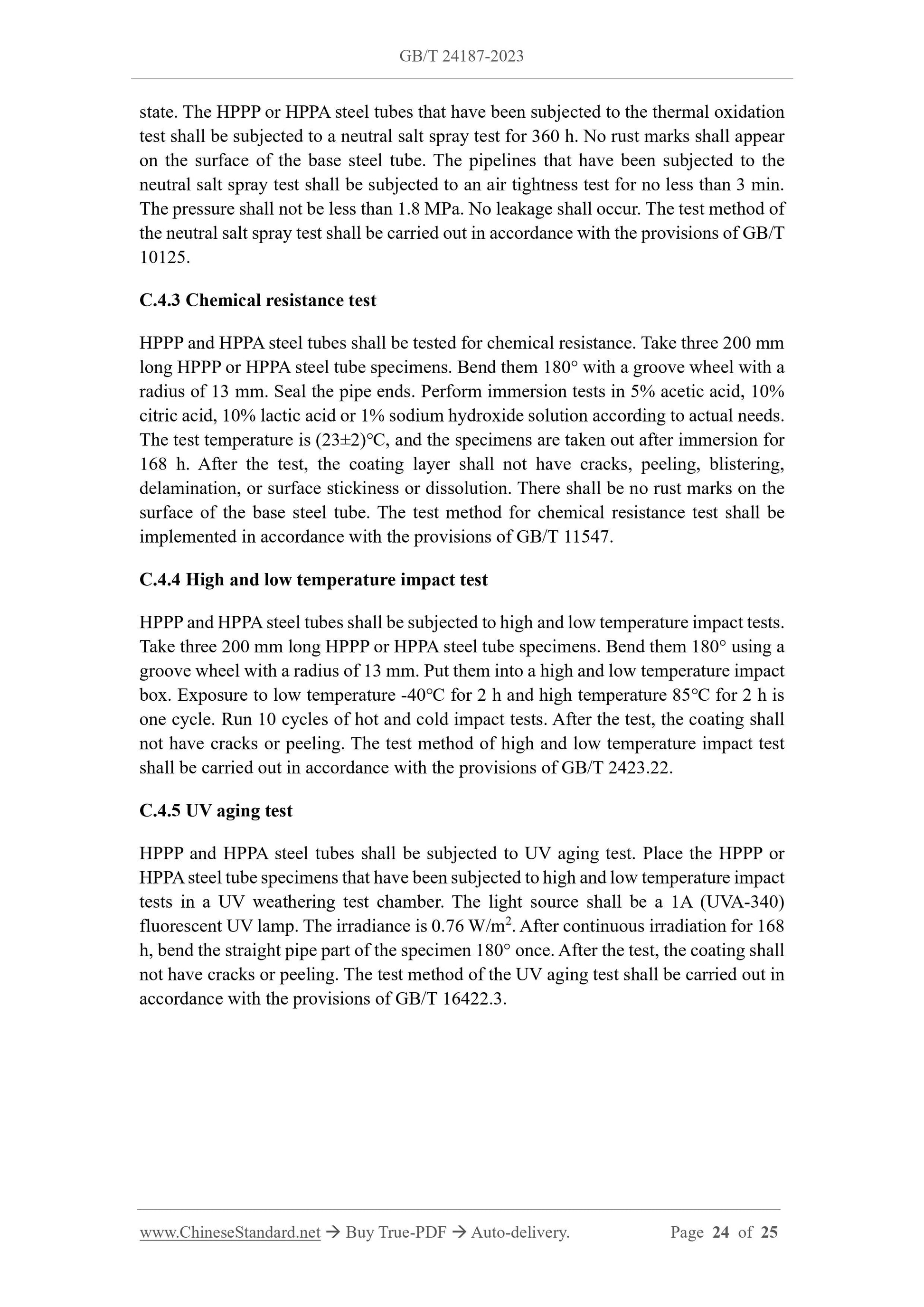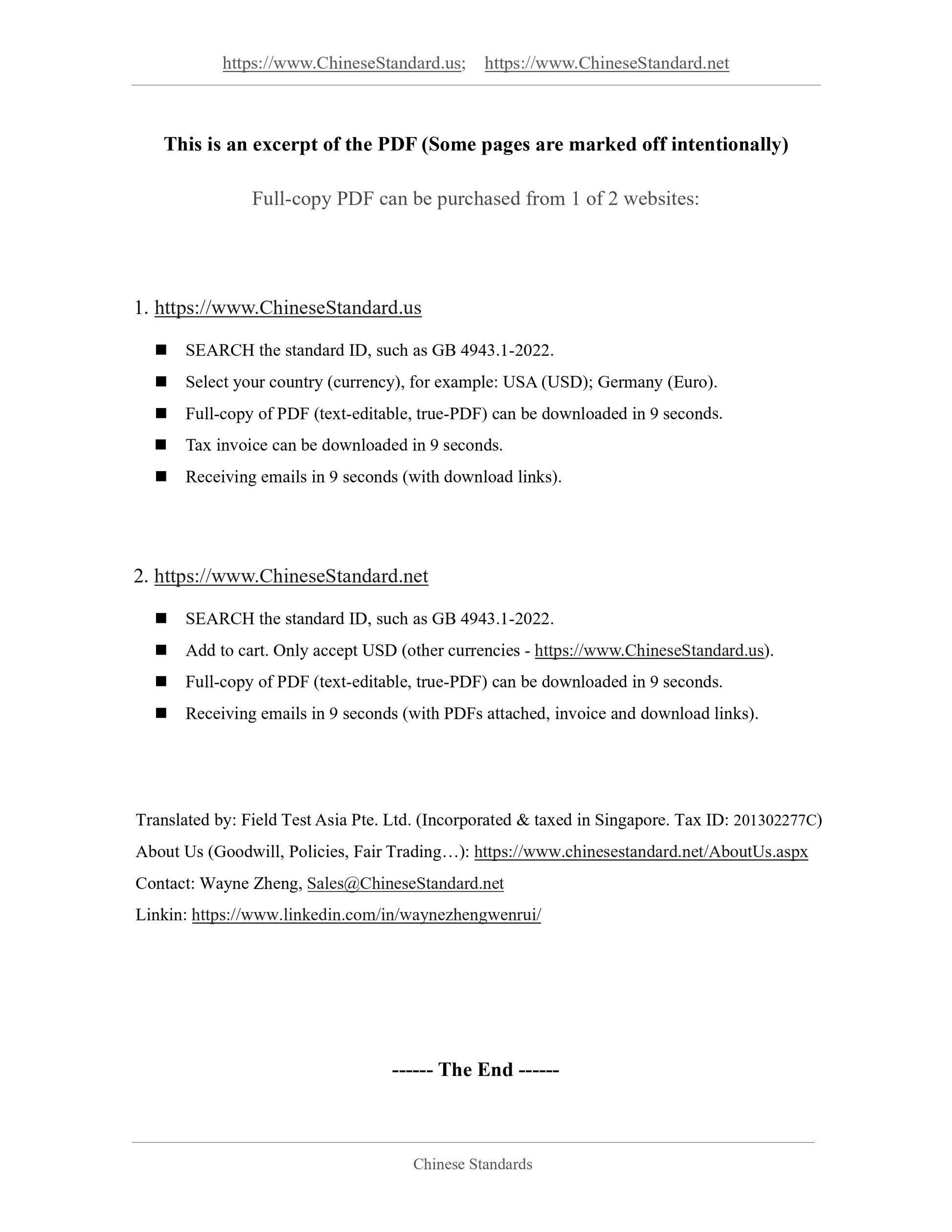1
/
of
8
www.ChineseStandard.us -- Field Test Asia Pte. Ltd.
GB/T 24187-2023 English PDF (GB/T24187-2023)
GB/T 24187-2023 English PDF (GB/T24187-2023)
Regular price
$260.00
Regular price
Sale price
$260.00
Unit price
/
per
Shipping calculated at checkout.
Couldn't load pickup availability
GB/T 24187-2023: Cold-drawn precision single welded steel tubes
Delivery: 9 seconds. Download (and Email) true-PDF + Invoice.Get Quotation: Click GB/T 24187-2023 (Self-service in 1-minute)
Newer / historical versions: GB/T 24187-2023
Preview True-PDF
Scope
This document specifies the classification and code, size, shape, weight and allowabledeviation, technical requirements, test methods, inspection rules, packaging, marking
and quality certificate of cold-drawn precision single welded steel tubes.
This document is applicable to cold-drawn precision single welded steel tubes
(hereinafter referred to as "steel tubes") used for the manufacture of condensers,
evaporators, fuel pipes, lubricating oil pipes, electric heating pipes, cooler pipes and
general piping in industries such as refrigeration, automobiles, and electric heating
appliances.
Basic Data
| Standard ID | GB/T 24187-2023 (GB/T24187-2023) |
| Description (Translated English) | Cold-drawn precision single welded steel tubes |
| Sector / Industry | National Standard (Recommended) |
| Classification of Chinese Standard | H48 |
| Classification of International Standard | 77.140.75 |
| Word Count Estimation | 18,151 |
| Date of Issue | 2023-08-06 |
| Date of Implementation | 2024-03-01 |
| Older Standard (superseded by this standard) | GB/T 24187-2009 |
| Issuing agency(ies) | State Administration for Market Regulation, China National Standardization Administration |
Share
